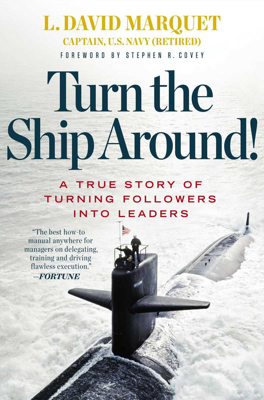Who’s Responsible?
Erosion of Ownership and Responsibility
On January 28, 1999, during an inspection aboard the USS Santa Fe, it was discovered that several administrative tasks had been neglected. The standard procedure involved a "tickler" system—a binder organized by department and due date, meant to track tasks rather than ensure their completion. This process was criticized for focusing more on monitoring status rather than accomplishing the tasks, utilizing excessive amounts of valuable supervisory time without achieving productive outcomes.
Inefficiency of the Tickler System
The tickler system was identified as inefficient and representative of a top-down, leader-follower structure that limited authority, creativity, and job satisfaction. This system merely catalogued tasks and delinquencies without facilitating their completion, which demotivated the team and stifled initiative and responsibility.
Implementing a New Mechanism: Eliminate Top-Down Monitoring Systems
A new approach was proposed to move away from the tickler system and reduce top-down monitoring: - Shift in Responsibility: Command shifted from monitoring to empowering department heads to manage their own tasks. - Autonomy in Management: Instead of having the Executive Officer (XO) manage the tickler, department heads were made responsible for tracking and completing their department's obligations. - Cultural Transformation: This change aimed to encourage a culture where individuals were directly responsible for their performance, thereby enhancing efficiency and reducing unnecessary meetings and oversight.
Positive Outcomes and Challenges
The abolition of the tickler system led to a culture where department heads felt more ownership over their work, resulting in increased efficiency and responsibility. While there was an initial concern that important tasks might be neglected, the new system proved effective with minor issues being quickly remedied.
Reflection on Process Adherence and Ownership
Marquet reflects on the tendency of organizations to focus excessively on process adherence, which often becomes the objective itself rather than a means to achieve the actual goal. He cites W. Edwards Deming's principles from Out of the Crisis, emphasizing that improving processes can enhance efficiency, whereas merely monitoring processes can detract from it.
Questions to Consider
- Are you underutilizing the creativity and initiative of your mid-level managers by not allowing them to take full responsibility for their department's work?
- Can you adapt the Santa Fe’s approach to eliminating the tickler and empower department heads to manage their tasks independently?
- How many top-down monitoring systems are present in your organization, and how can these be effectively reduced or eliminated?
